
Black on white. We are so accustomed to this phrase that it is quite unusual to see some text written on a different surface. Indeed, dark letters on a light background are the most convenient for the human eye. That’s why this principle (to write in dark letters on a light background) was always observed in ancient manuscripts – scrolls and codices. However, during the Christian age there appeared certain manuscripts based on the opposite principle. Let us tell you about these unique masterpieces of book art.
It is well known that Christians have a special attitude towards the Scripture. Reading the Gospel has been part of Christian worship virtually since the earliest times. The divine service itself became more complex over time, and new elements were added to it. Especially since the recognition of Christianity in the Roman Empire, the church service was becoming more magnificent. Accordingly, the books of the Holy Scriptures, which were used during the divine services, were decorated in every possible way both from the outside and from the inside. Outside, the codices of the holy books had luxurious covers, which were decorated with gold, encrusted with precious gemstones, chasing, enamels, etc. Inside, the text itself was accompanied by colored illustrations and captions, which could be painted with very expensive dyes, as well as be adorned with gold leaf and silver leaf.
The art of book illustration reached its zenith in the Christian era. The aesthetic tastes of the late Roman Empire, early Byzantium, and barbaric kingdoms that emerged from the ruins of the Western Roman Empire required that the most important and sacred objects be made of the most valuable materials. The Christians who lived in the era after the pagan persecutions wanted to give the most precious things to God. That’s when purple manuscripts appeared.
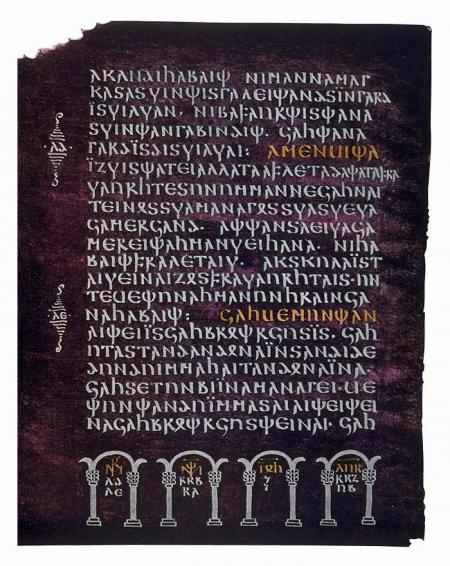
Purple paint has been one of the most expensive since ancient times. It was extracted from the shells of rock snails originally known by the name Murex. This paint was, without exaggeration, valued for its weight in gold. After all, in order to produce just 200 grams of purple pigment, one had to procure about 30 thousand shells. Parchment sheets dyed purple with letters written in gold look as if it is hard to come up with anything more expensive and luxurious. That’s why one can often see books where purple sheets make up only a part of the codex. This luxury, though, was condemned by Christian publicists if it ran counter to the deeds of mercy. Thus, Blessed Jerome of Stridon in his message to Eustochia On the Preservation of Virginity, written in 384, says, “The parchment is dyed purple, the gold shines in the letters, the cover is embellished with precious stones – and the naked Christ dies at the door.” Interestingly, this negative reference to purple manuscripts is also the very first written mention of them.
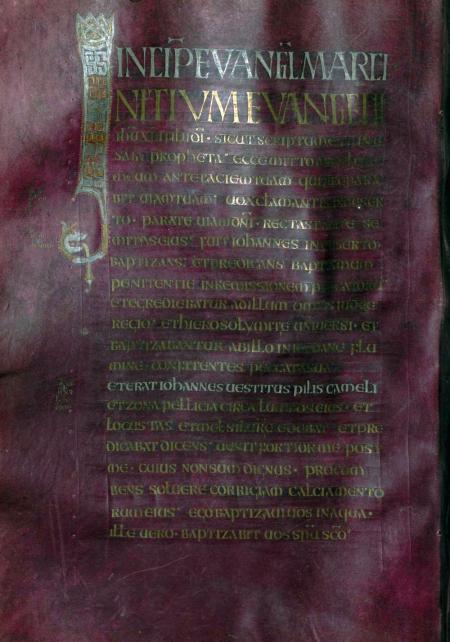
However, purple and gold were not just expensive materials; they carried a certain symbolism. In the 8th century, the monk-scribe Godescalc, who was commissioned by the Western Emperor Charlemagne to make a copy of the Gospel written in gold and silver on purple, wrote a poetic introduction to his work:
The purple backgrounds here are gold plated;
The scarlet blood of the thundering kingdom opens heaven;
The starry castle promises us the joys of paradise;
The word of the Lord is glowing in a bright sparkling light.
God’s covenants, dressed in scarlet roses,
Make us part of the mystery of His blood.
In the luminous sparks of gold and the gentle shine of silver
The mysterious white chastity of heaven comes down to us…

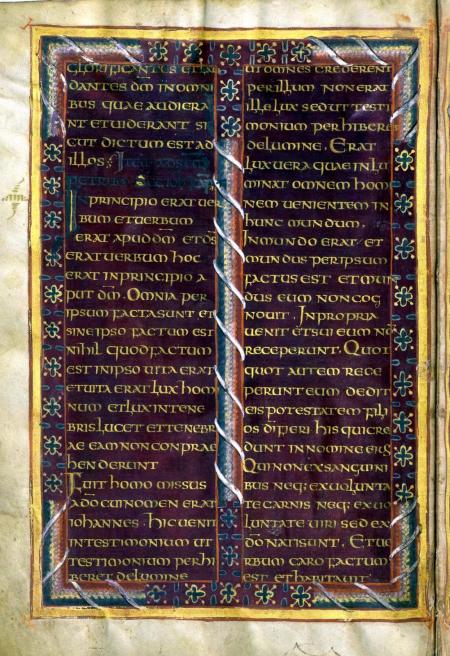
Of course, purple is also an imperial color. That is why it is quite logical to see this color in the decoration of the commandments of the King of Heaven. It should be noted that manuscripts on purple parchment were used exclusively for the decoration of special imperial decrees or for books of Holy Scripture.
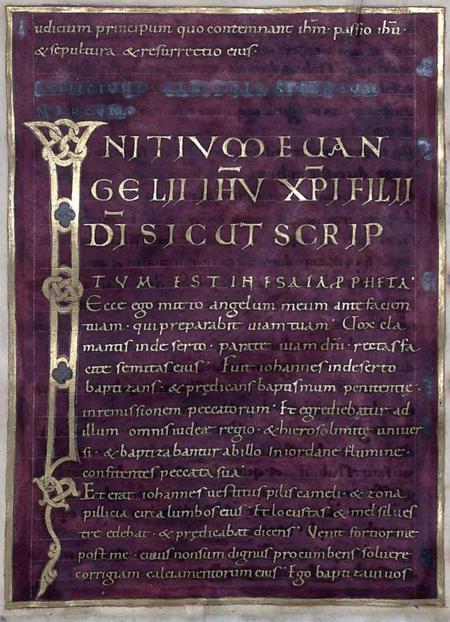
Approximately 25 purple manuscripts, which were produced between the 8th and 10th centuries, have survived to this day. We do not have any information on the production of such manuscripts in later ages. However, there is a 13th-century icon of Christ the Almighty in the Sinai Monastery of St. Catherine, on which the Savior holds an open book with the words of the Gospel of John, I am the light of the world: he that followeth me shall not walk in darkness, but shall have the light of life, on it. ( John 8:12). This Gospel book (an extremely rare case in iconography) is depicted with purple pages and golden letters.
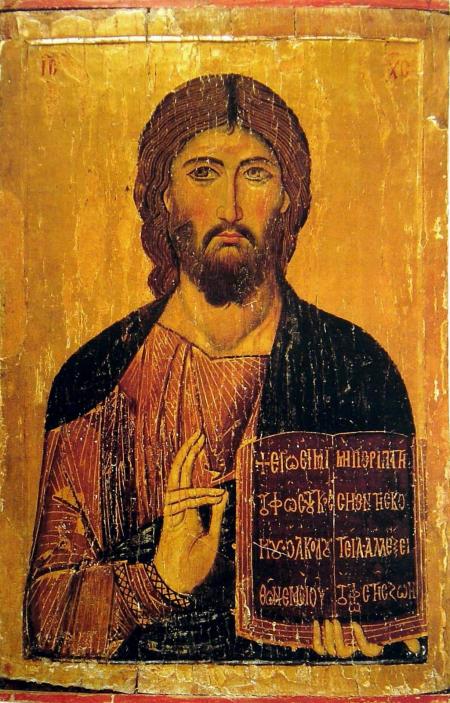
Of course, many of them have survived in a damaged condition, the colors have faded in some places. Nonetheless, it does not prevent us from appreciating these works of Christian art.
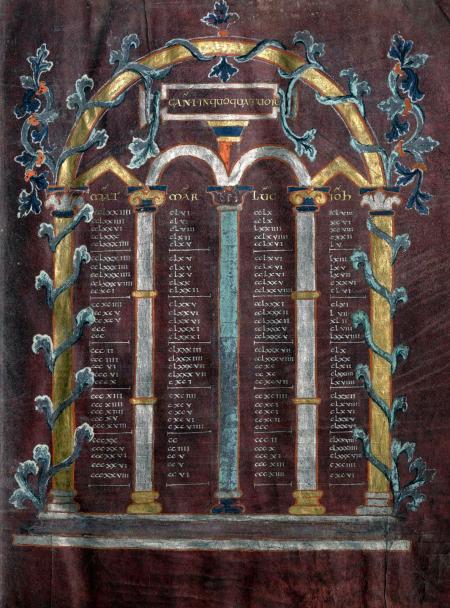
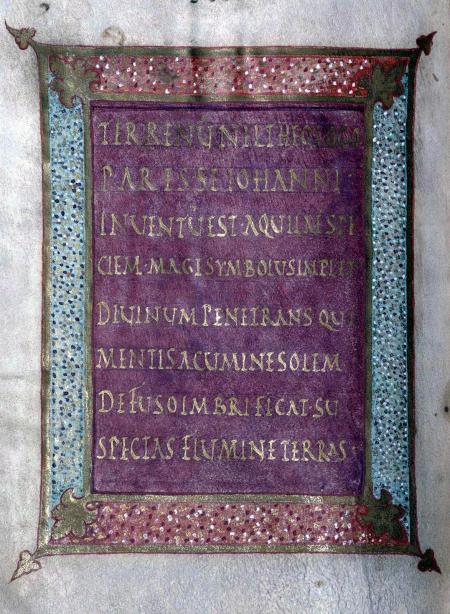
Translated by The Catalogue of Good Deeds
Source: https://pravlife.org/ru/content/purpurnye-rukopisi-ob-unikalnyh-pamyatnikah-knizhnogo-tvorchestva



